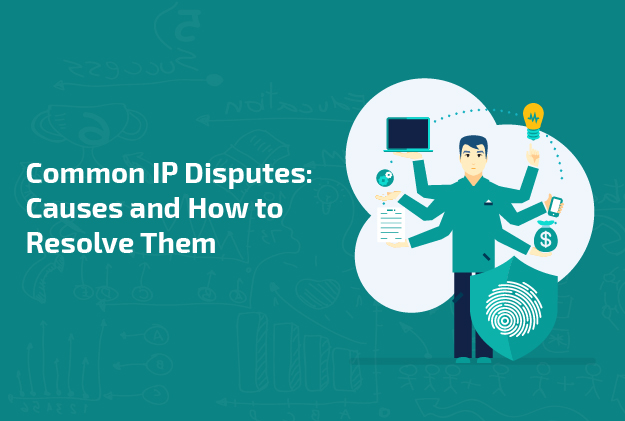
Intellectual property is essential for the success of any business as it forms its foundation. IP is important in enhancing brand identity and enabling revenue through licensing. Corporates can leverage shared IP through strategic partnerships and reach a broader market with effective IP management.
Introduction to Intellectual Property (IP)
Intellectual property refers to the creation of the mind, such as literary work, artistic work, designs, logos, inventions, symbols, and many more. These are protected by intellectual property rights, a set of legal and exclusive rights granted to the rightful owners over their intellectual assets. These rights are primarily branched into copyright, patent, trade secrets, and trademarks, protecting various intellectual assets.
Intellectual property is not essential for artists or creators only, as IP benefits businesses and corporates equally. By protecting IP, corporates can gain competitive advantages over their rivals and establish their brand identity in the market. Additionally, strategic IP management can enhance their businesses through intellectual property licensing and can avail supplementary monetary benefits. Corporates can easily foster strategic partnerships by securing their intellectual assets.
The Role of Licensing in IP Management
Licensing plays a significant role in IP management as it allows the rightful creator to grant permission to use their intellectual assets in exchange for fees or royalties. Through licensing, corporates can grow their businesses by expanding their brand into a market. Further licensing agreements help corporates to utilize and commercialize their intellectual property. Also, it can ensure strategic alliances and encourage business partnerships, benefitting the corporates in their business expansion. They help in technology transfer, collaborative research, and development, driving innovation.
Strategic Partnerships and IP
Corporates can plan strategic partnerships, joint ventures, alliances, and collaborations involving several organizations working on the same goal. In these collaborative ventures, corporates leverage their intellectual properties by combining them into something innovative. IP pooling results in expansion to new markets, cost reduction, combined expertise, and reduced vulnerability to fraud risks. These shared ventures help corporates in revenue generation through IP, and many times, they commence projects that are considered too risky.
Building and Managing Strategic Partnerships
Corporate IP strategy involves building and managing strategic partnerships for business growth and expansion. The process involves several activities:
- Identification of potential partners
- Alignment with the same goal
- Complementing collective needs
- Clear and defined objectives
- Formal agreements
- Regular reviews and adjustments
- Establishing specific KPIs
- Periodic evaluations
- Partnership assessment
- Feedback from the involved stakeholders
Building these strategic partnerships can help corporates expand their market reach and enhance their market positioning, creating a healthy and fair market for all to grow.
Case Studies and Real-World Examples
Strategic Partnerships, collaborations, and partnerships have often offered valuable outcomes. Through Intellectual Property Licensing, corporates can create mutually beneficial partnerships. There are several cases where these partnerships have fostered innovation and set examples for successful collaboration.
Following are some famous examples of IP licensing and strategic partnerships:
Microsoft and Nokia
The 2014 merger between Microsoft and Nokia started with Microsoft purchasing Nokia’s Devices and Services division, intending to position itself in the smartphone market. However, Microsoft acquired only a few Nokia patents to use rather than entire patents, limiting its ability to leverage its innovations to their full potential., limiting its ability to leverage its innovations to their full potential. The merger faced challenges and ended in Microsoft retreating from the smartphone industry.
Marvel and Disney
2009 witnessed a historic deal in the entertainment industry with the Marvel-Disney merger, where the latter got access to the formal’s vast portfolio of characters and stories, which are valuable IP assets. Further, this IP acquisition provided Disney with licensing and merchandising opportunities. Conversely, Marvel obtained Disney’s extensive marketing resources and global distribution network. This partnership was one of the most successful, boosting their market positioning.
Starbucks and Nestlé
The strategic partnership between Starbucks and Nestlé was formed in 2018, with Nestlé getting the right to sell Starbucks packaged coffee and tea. The strategic use of IP enables Nestlé to expand its market positioning. Starbucks received a financial gain in exchange for sharing its IP, further broadening its market reach. The partnership proved beneficial for both of them, establishing a significant shift in their market positioning.
IBM and Linux
IBM and Linux gained substantially from their long-term strategic partnership, which provided access to its patent projects. The collaboration led IBM to position itself as a leader in open-source technology while protecting its IP rights. At the same time, Linux received notable development resources and increased its credibility in enterprise markets by adhering to licensing agreements for contributions.
Challenges and Considerations
While strategic partnerships often benefit the parties involved. There are still a significant number of lurking challenges and considerations to be taken care of while opting for strategic alliances:
- Unprotected IP can result in a dispute
- Conflict due to unaligned goals among the partners
- Inadequate Due Diligence can result in risks and underperformance
- Uncleared agreements can lead to disputes and mismanagement of IP
- Shared visions are crucial for long-term collaboration
- Partnerships should be mutually beneficial
Strategies for IP protection in partnerships and collaborations
One of the most significant challenges in forming a partnership is IP protection. The shared nature of the work makes it very crucial to opt for strategies for IP protection. Some of the key methods include:
- Detailed agreement outlining the ownership rights and use of IP
- Use of non-disclosure agreements (NDAs)
- Regular audits, tracking, and monitoring of IP
- Prevention of unauthorized use of IP
Additionally, there are several strategies for IP protection and management. One such notable approach is MyIPR platform.
What Functions Does MyIPR Serve?
- It helps corporates manage, secure and certify their IPs; the certificates are blockchain-based and provide proof of possession. This serves as a significant step in IP protection during collaborations and partnerships.
- It helps corporates by certifying their work in progress, further strengthening security.
- It provides the option of certificate transfer, further aiding advantages.
- It facilitates watermark technology, strengthening IP while sharing and collaborating.
- It has been molded with an advanced algorithm to detect the similarities among the different ideas.
Concluding Remarks
Intellectual property plays a crucial role in establishing a brand identity for any corporate. Corporates can get additional revenue by licensing their intellectual assets for fees or royalties. Also, through strategic partnerships, they can expand their brands to new markets, reduce costs, gain combined expertise, and ultimately reduce vulnerability to fraud risks. However, corporates must remain vigilant for IP protection while engaging in collaborations and partnerships. IP management, including detailed agreements, non-disclosure agreements, and regular audits, is essential to safeguard intellectual assets. Further, platforms such as MyIPR line up with the same vision of protecting and managing intellectual assets.
For more information and to ask queries, please visit MyIPR. This user-friendly application will streamline your creation and will make sure to comply with the security of the content and creation.












